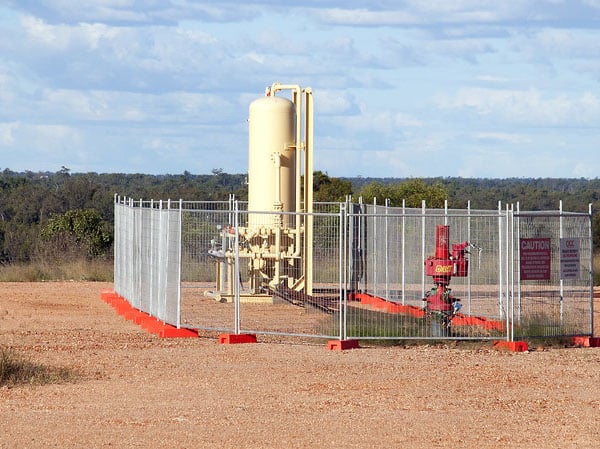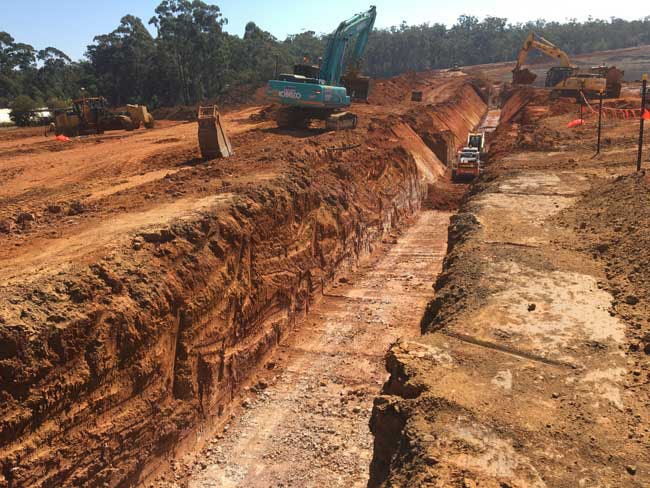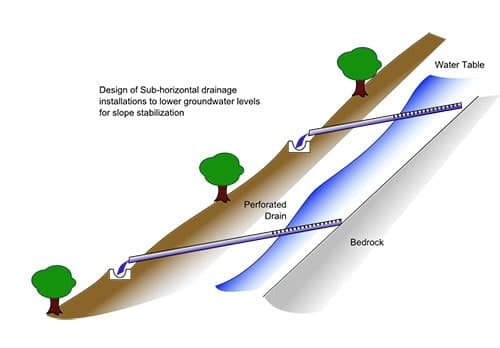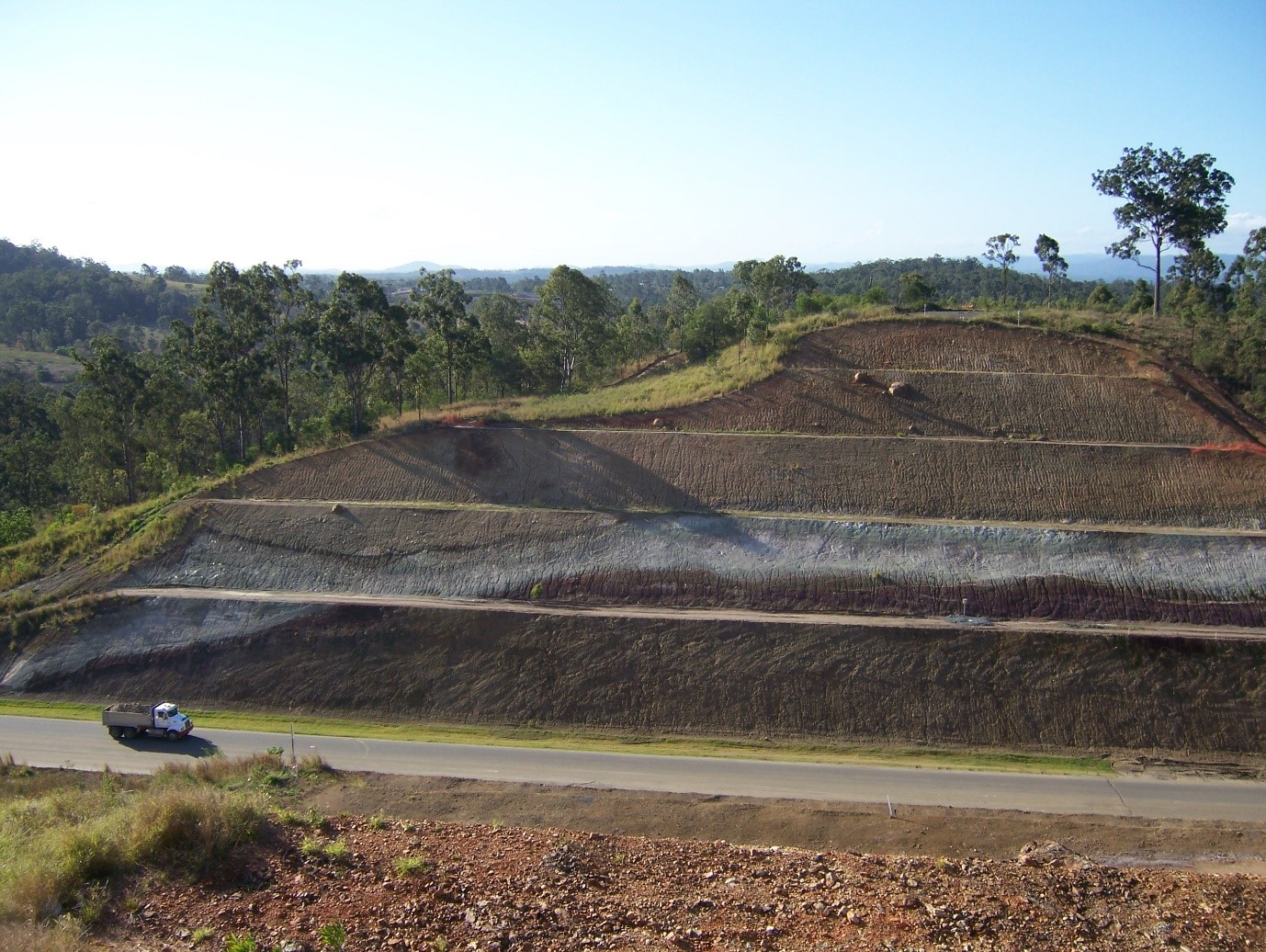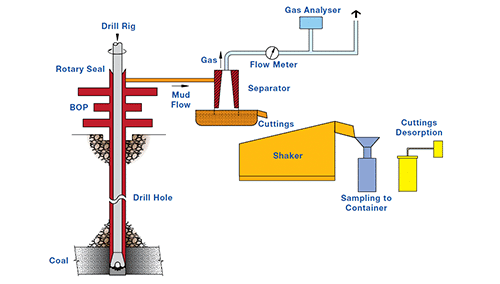The concept of a stress path is just as important for coals. Changing effective stresses within coals lead to varying stiffness and poroelestic behaviour. It also leads to substantial changes in permeability. Knowing how stresses change in coals is particularly important from the viewpoint of drainage.
A coal will have an initial stress, fluid pressure and gas content. It is normal for the initial fluid (water) pressure in coals to be slightly higher than the pressure at which gas is initially desorbed. As the water pressure drops the effective stress increases, depending on the poroelasticity of the coal. The permeability may then be expected to reduce. When the pressure of the water drops below the sorption pressure gas is desorbed. This leads to coal shrinkage as it gives up gas. This in turn leads to a reduction in the effective stress. The degree to which this occurs is dependent on the stiffness of the coal and the way in which the poroelasticity changes. A stiff coal will drop stress more rapidly with desorption. With a drop in effective stress, it is usual for the poroelasticity to increase. These combined effects lead to a change in permeability.
The initial values required to determine the stress path in a coal being drained are:
Also required are the coal properties which are:
To be able to turn these into a permeability model some information is required on the permeability of the coal. This information may come from diagnostic fracture injection tests which can provide information on minimum stress and permeability. A number of such tests may reveal the stress versus permeability relationship of the coal.
The output of the stress path is typically a plot of effective stress versus fluid pressure. This typically models the changes in effective stress in the major and minor permeability directions. The stress path may also be used in reservoir simulation.
Because the permeability of many coals is extremely sensitive to effective stress knowing the changes in effective stress that will occur is valuable even if the absolute values of permeability cannot be deduced.




